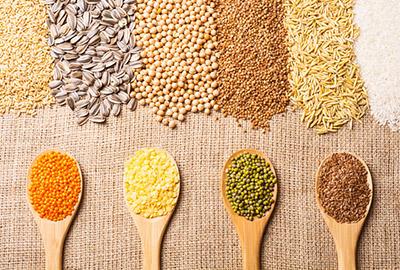
Plant-based proteins
Sports and vegan nutrition
Elementa carries a range of plant-based proteins with useful and varied nutritional characteristics:
- Organic and conventional rice protein isolate
- Organic and conventional yellow pea protein isolate
- Organic and conventional fava bean protein isolate
- Organic and conventional red lentil protein isolate
- Organic and conventional chickpea protein isolate
- Organic yellow pea protein concentrate
- Organic toasted pumpkin protein concentrate
- Organic and conventional fava bean protein concentrate
- Organic and conventional red lentil protein concentrate
- Organic and conventional chickpea protein concentrate
Composed of between 40% to 85 % protein in dried form, they are naturally gluten-free. Most of our proteins are organic certified. ![]()
Plant-based proteins can satisfy human protein needs, as an alternative to animal-origin proteins, catering to vegan and vegetarian diets as well as other special diets (food allergies, intolerances).
Elementa offers a wide range of plant proteins derived from various plants of interest:
1. Rice proteins
a. Organic and conventional rice protein isolates
The organic certified rice protein isolates contain more than 80% protein on dry matter. They come from Oriza sativa species.
These ingredients are Kosher and Halal certified, guaranteed GMO-free according to the organic regulations in force and hypoallergenic.
Rice proteins are very interesting for their amino acid profile, close to the milk one. Rice proteins are fine and creamy white powders with a sligth cereal taste and smell.
They are intended for high-protein sports nutrition products and weight control.

2. Pea proteins
a. Organic and conventional pea protein isolates
Elementa also offers Pisum sativum yellow pea protein isolates with over 80% protein in dried form, certified organic. These are also certified for Halal and Kosher foods and are guaranteed GMO-free in accordance with current Organic regulation and are also Gluten-free.
Their Amino Acid profile is close to that of milk, with interesting levels of arginine, glutamine and BCAAs (Branched-chain amino acids).
Pea protein is a fine beige/light yellow powder with a neutral odour and flavour, reminiscent of plants and nuts.
Pea proteins are used in numerous formulations such as drinks and protein bars, for sports and vegan nutrition.
b. Organic pea protein concentrates
Yellow pea protein concentrates from the Pisum sativum species have over 55% protein on a dry weight basis and an interesting fibre content (on average 16% in dried form).
Certified Organic, our proteins are also certified Kosher and Halal, are guaranteed GMO-free in accordance with current organic regulation and are without allergens.
Pea protein is a fine beige/light yellow powder with a fairly neutral odour and flavour, with a slight bitterness and planty notes.
The concentrates are available as granules.
Interesting for their balanced amino acid profile, rich in lysine and glutamine, they are also renowned for their technological properties.
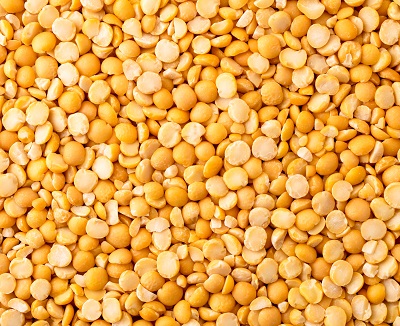
3. Pumpkin proteins
a. Organic pumpkin protein concentrates
Organic toasted pumpkin concentrate is derived from seeds grown and processed in Europe from the species Curcurbita pepo.
It contains more than 60% protein on dry matter, and are guaranteed GMO-free according to the organic regulations in force and gluten-free.
This ingredient is a fine powder with a light green color, a vegetable odor and roasted almonds taste. Pumpkin proteins have a complete amino acids profile, and are rich in minerals as zinc, phosphorus and magnesium. This concentrate is ideal for sports nutrition products, such as shakers, energy bars, or dietetic products.
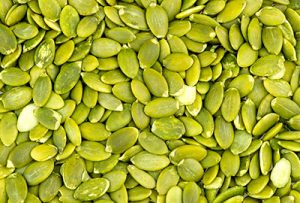
4. Fava bean proteins
a. Organic and conventional fava bean protein isolates
The fava bean isolates are from the Vicia faba genus which is grown in Europe. Available in both conventional and organic versions, they provide a minimum of 80% protein in dry matter in the organic version and 85% in the conventional version. They are GMO-free, gluten-free and certified both halal and kosher.
Elaborated in Europe, these isolates possess interesting nutritional properties 38% of their amino acids are essential amino acids and they contain 18% branched-chain amino acids with a high leucine content.
b. Organic and conventional fava bean protein concentrates
The fava bean concentrates are also from the Vicia faba genus and they contain more than 55% protein on a dry weight basis. They are available in both conventional and certified organic, halal or kosher versions.
Their nutritional profile is interesting because of their high fibre content, their low saturated fatty acid content and amino acid profile. It is also an excellent source of magnesium and zinc, GMO-free according to the organic regulations in force, gluten-free and of European origin.

5. Red lentil proteins
a. Organic and conventional Red lentil protein isolates
Red lentil protein isolates come from the Lens culinaris genus grown in Canada, and elaborated in Europe. Available in both conventional and organic versions, they provide a minimum of 80% protein in dried form. Halal and kosher certified proteins are also available.
Gluten-free and GMO-free, their nutritional properties are also very interesting. 39% of the amino acids from these isolates are essential amino acids and 18% are branched-chain amino acids. Their valine content is quite high.
b. Organic and conventional red lentil protein concentrates
Red lentil protein concentrates (Lens culinaris) are gluten-free, GMO-free according to the organic regulations in force and are European in origin. Available in both conventional and organic versions, halal and/or kosher with a 55% minimum protein content on dry matter.
Their nutritional properties include high levels of fibre and low levels of saturated fatty acids. They are also an excellent source of iron and potassium with a good amino acid profile.

6. Chickpea proteins
a. Organic and conventional Chickpea protein isolates
The chickpea protein isolates in the ATURA range are from the Cicer Arietinum genus grown in Turkey and are elaborated in Europe. Available in both conventional and organic versions, they provide over 70% protein on a dry weight basis.
They are GMO-free, gluten-free and certified both halal and kosher. Their amino acid composition is also high in glutamic acid, with interesting levels of essentiel (39%) and branched-chain (17%) amino acids.
b. Organic and conventional chickpea protein concentrates
Chickpea (Cicer arietinum) protein concentrates from the ATURA range, whether conventional or organic, contain over 40% protein on dry matter.
Originating in Europe, this Chickpea protein is high in quality and provides numerous benefits. It is gluten-free, GMO-free according to the organic regulations in force and is available in the halal and/or kosher certified versions. It is also a “source” of fibre. It is an excellent source of Vitamin B9 and Magnesium, with a good amino acid profile and low levels of saturated fatty acids.

Plant-based proteins have nutritional properties that are perfectly adapted for vegans and vegetarians, as well as those who are lactose- or gluten-intolerant. They represent an ideal alternative to animal proteins.
Proteins play an important structural role in the human body. They participate in the renewal of muscle tissue, hair, nails, skin and the bone matrix. As the main component of digestive enzymes, haemoglobin, hormones, receptors or immunoglobulins, they are involved in various physiological processes (ANSES, 2019).
Plant-based proteins are a source of essential nutrients. They contain useful compounds, such as minerals (iron, zinc, magnesium), fibre, fatty acids (omega-3 and -9) and vitamins.
1. Advantageous nutritional properties
a. Cereals
b. Pulses
c. Oilseed plants
2. Organic plant proteins : Health benefits
a. Muscle maintenance and growth
b. Maintenance of bone mass and strength
c. Effect on satiety
1. Advantageous nutritional properties
Plant-based proteins can cover the daily requirements for protein and also essential amino acids. Lysine, isoleucine, leucine, valine, cysteine, methionine, threonine, phenylalanine, tryptophan are the nine essential amino acids that the human body cannot synthesize in sufficient quantities. They must be supplied by the diet to meet nutritional needs.
According to the protein source, content and quality, the amino acid composition and availability can vary. Elementa has selected different sources of plant-based proteins that have particular properties.
a. Cereals
Cereal is known as a source of sulphur-containing essential amino acids (methionine and cystine) that participate in the synthesis of creatine. However, most have a low lysine content.
Rice proteins have an amino acid profile similar to that of milk, are rich in glutamine and arginine, they also have a non-negligible quantity of branched-chain amino acids (BCAA). BCAAs are leucine, isoleucine and valine, and there are scientific reports that they are highly involved in muscle effort. Leucine appears to prevent muscle breakdown, and play a role in sterol synthesis. Glutamine supplies energy to cells and regulates the activity of the immune system. Arginine is involved in many metabolic processes, such as muscle contraction.
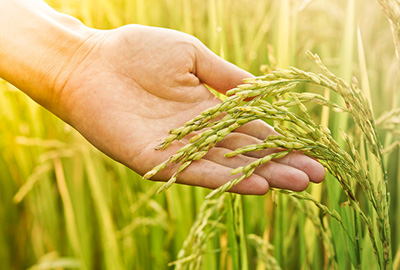
b. Pulses
Pulses, pea and fava bean proteins, are the seeds of plants in the legume family. They are a source of lysine and have very limited levels of sulphur-containing amino acids.
Pea proteins have a balanced amino acid profile, rich in leucine and arginine, which both participate in muscle contraction. They have low trypsin inhibitor activity (trypsin inhibitors are ant nutritional factors). It has a good digestibility (close to 96%).
In addition, fava bean proteins are a source of tyrosine, which is a precursor of melanin, dopamine, noradrenaline and thyroid hormones.

c. Oilseed plants
Proteins derived from oilseeds, including pumpkin seed, have a balanced essential amino acid profile, and are a source of minerals and vitamins.
Pumpkin protein is particularly complete. It has a high quantity of BCAAs and arginine and histidine, also high in iron.

2. Organic plant proteins : Health benefits
The scientific literature details the various benefits that plant-based proteins offer, with many studies demonstrating the specific positive effects of plant proteins. Plant-based proteins appear to have many benefits, particularly on health: enhanced sleep, cardiovascular health, weight control and immune system.
a. Muscle maintenance and growth
Essential amino acids derived from plant-based proteins help promote muscle maintenance and growth. BCAAs are essential amino acids that are broken down in skeletal muscles (see, for review, Shimonura et al. 2006). Supplementation with these BCAAs, before or after exercise, may help increase muscle mass and limit the breakdown of muscle proteins due to their anti-catabolic properties.
Additionally, one study showed that proteins help favour the maintenance of muscle mass with age, particularly when plant-based protein-rich diets are consumed (Gorissen et al. 2018). Another study noted that the synthesis of muscle proteins depends on the quantity of leucine (a BCAA) available (Norton et al. 2010).

b. Maintenance of bone mass and strength
The type and quantity of proteins consumed in the diet have a significant impact on bone mass and strength. Researchers at the Department of Physiology at the University of Grenada showed the benefits of a protein-based diet for bone health (Nebot et al. 2104). A high-protein diet appears to improve bone properties in rats. Another study, published in the American Journal of Clinical Nutrition in 2008, indicates that diets high in protein may help enhance bone mass and decrease the number of fractures when calcium intake is sufficient. Moreover, the study underlines the important role proteins play in bone health, for the prevention of osteoporosis and sarcopenia

c. Effect on satiety
Satiety is the absence of hunger between meals, a feeling that is generally increased after consumption of a high-protein meal. A study conducted by INSERM Lyon in 2012 accurately describes the double-loop chain reactions triggered by the digestion of proteins, and how it involves the nervous system. First, the presence of oligopeptides, derived from protein digestion, affects nervous system receptors, which send a signal to the brain, which in turn triggers glucose synthesis in the intestine. The increase in glucose concentration in the intestine sends a signal to the brain — specifically the hypothalamus — which controls food intake and feeling satiated (full).
Proteins are generally used in high-protein diets for weight loss, and their effects on feeling full have been proven. A study showed that intake of plant-based (bean and pea) proteins favourably influences appetite relative to animal proteins (pork and veal) at equivalent caloric and protein amounts (Marlene et al. 2016).
In parallel, dietary protein contributes helps fight against obesity and metabolic syndrome, it is involved in satiety and energy metabolism (Westerterp et al. 2012)

Sources
- ANSES – French Agency for Food, Environmental and Occupational Health & Safety, Proteins [on line], https://www.anses.fr/en/content/proteins (consulted on 21 November 2019).
- Gorissen, S., &Witard, O. Characterising the muscle anabolic potential of dairy, meat and plant-based protein sources in older adults. Proceedings of the Nutrition Society, 77(1), 20-31.
- CREVIEU-GABRIEL, Digestion des protéines végétales chez les monogastriques. Exemple des protéines de pois, INRA Prod. Anim., 1999, 12 (2), 147-161 I.
- INSERM, L’effet « coupe-faim » des protéines élucidé [en ligne].https://presse.inserm.fr/leffet-coupe-faim-des-proteines-elucide/1219/ (consulté le 10.11.2019)
- Marlene D. Kristensen, Nathalie T. Bendsen, Sheena M. Christensen, Arne Astrup& Anne Raben Meals based on vegetable protein sources (beans and peas) are more satiating than meals based on animal protein sources (veal and pork) – a randomized cross-over meal test study, Food & Nutrition research (2016)
- Nebot E, Erben RG, Porres JM, Femia P, Camiletti-Moirón D, Aranda P, López-Jurado M, Aparicio VA. Effects of the amount and source of dietary protein on bone status in rats. Food Funct. (2014)
- Norton, L.E., Wilson, G.J., Layman, D.K. et al. Leucine content of dietary proteins is a determinant of postprandial skeletal muscle protein synthesis in adult rats. NutrMetab (Lond) 9, 67 (2012)
- Robert P Heaney, Donald K Layman, Amount and type of protein influences bone health, The American Journal of Clinical Nutrition, Volume 87, Issue 5, , Pages 1567S–1570S (2008)
- Shimomura Y1, Yamamoto Y, Bajotto G, Sato J, Murakami T, Shimomura N, Kobayashi H, Mawatari K., Nutraceutical effects of branched-chain amino acids on skeletal muscle. . J Nutr. (2006)
- Westerterp-Plantenga MS, Lemmens SG, Westerterp KR. Dietary protein – its role in satiety, energetics, weight loss and health. Br J Nutr. (2012)
Dietary plant-based proteins are found in significant quantities in cereals, pulses, oilseeds, grains and algae.
Elementa’s range of proteins are food ingredients with high protein concentrations.
On a regulatory level, the Codex Alimentarius defines these ingredients as “vegetable protein products” (VPP). VPPs are « food products produced by the reduction or removal from vegetable materials of certain of the major non-protein constituents (water, oil, starch, other carbohydrates) in a manner to achieve a protein (N x 6.25) content of 40% or more. The protein content is calculated on a dry weight basis excluding added vitamins, minerals.” (Codex Alimentarius 1989).
The Codex Alimentarius FAO/WHO oversees international food standards, guidelines and codes of practice. According to the general standard, protein content must be equal to or greater than 40% (on a dry weight basis) for a food products to be called VPP. (General Standard for Vegetable Protein Products (VPP) Codex Standard 174-1989. Adopted in 1989. Amended in 2019.)
Moreover, the Codex Alimentarius presents the general guidelines for the use of VPP in food (General Guidelines for the Utilization of Vegetable Protein Products (VPP) in Foods CAC/GL 4-1989) that defines the conditions for using the term VPP, labelling rules and use in food intended for human consumption.
Plant-based proteins are ingredients that can be incorporated in formulas as nutritional ingredients for protein supplementation. Various manufacturing processes can increase the protein concentration relative to the raw product. They also help improve the technological properties of proteins (e.g. their solubility), as well as decrease the impact of any potential antinutritional inhibitors, thereby enhancing protein digestibility.
Proteins can also be used as functional ingredients. According to their source, plant-based proteins have very useful functional properties for product formulation. They are used for their emulsifying, jellifying and thickening properties, for their capacity to retain water and their filmogenic properties (AFFSA, 2007).
Our range of products includes various types of plant-based proteins adapted to your formulation needs :
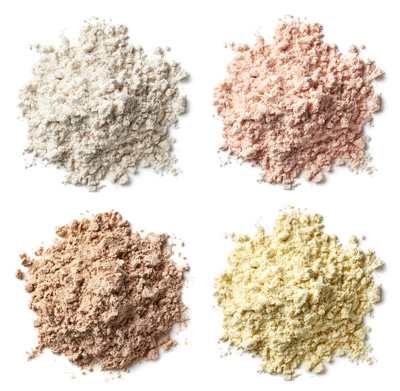
1. Plant-based protein isolates
The isolates in our range are obtained by aqueous phase extraction followed by a separation step and then a drying step. This process is achieved using a flour (delipidated or simple) or a concentrate.
The proteins are extracted by adjusting the pH. This process produces a powder with a high protein content of up to 85% in dried form.
Isolates can be used in a wide range of formulations, for sports or dietary nutrition. They provide a valuable source of protein, and are used in recipes for dietary products such as protein bars and meal replacements.
a. Organic and conventional rice protein isolates:
- Fine creamy white powder
- Neutral taste with a dominant cereal flavour
- Ideal for sports nutrition drinks
- Other applications: protein bars, ice cream, bakery products, etc.
b. Organic and conventional yellow pea protein isolates:
- Fine beige powder
- Neutral taste with cereal flavour and hints of plants and nuts
- Good solubility: ideal for sports nutrition drinks
- Other applications: protein bars, ice cream, bakery products, etc.
c. Fava bean protein isolates:
- Cream coloured powder
- Neutral flavour with slightly bitter planty notes
- Easy to disperse and dissolve
- Applications: binder for meat substitutes, in beverages, specialised nutrition and nutritional powders and sports products (bars and snacks)
d. Red lentil protein isolates:
- Salmon/light peach coloured powder
- Neutral flavour
- Very highly dispersible and soluble
- Applications: nutritional powders and specialised nutrition, drinks, meat substitute products and snacks
e. Chickpea protein isolates:
- Light yellow coloured powder
- Neutral flavour
- Excellent dispersibility and dissolving properties
- Applications: beverages, specialised nutrition, bars and snacks, nutritional powders in meat substitute products, etc.
2. Plant-based protein concentrates
Plant protein concentrates are manufactured differently depending on their source, and on the starch and lipid content of the seed.
Oilseed concentrates are obtained from oilcake, after pressing the seeds. The cake is then dried and ground to obtain a fine powder.
Protein seed concentrates are obtained using a mechanical separation concentration process which separates the starch (large particles) from the proteins (fine particles).
In both cases, there is neither a chemical extraction nor the use of solvents.
Concentrates are used in the formulation of protein bars and sports nutrition products. They can be used to make vegetable protein powder mixes for sprinkling on, for smoothie-type drinks, or for incorporating into recipes for bakery products, diet dishes, spreads or dippers.
a. Organic yellow pea protein concentrates:
- Yellow coloured powder
- Typical pea flavour
- Ideal in snack formulations, bakery or pastry products, spreadable products
- Acts as a stabiliser and improves consistency: viscosity and smooth texture
- Good emulsifying properties: suitable egg substitute for vegan alternatives
b. Organic pumpkin protein concentrates:
- Pale green powder, vegetable odour
- Predominantly toasted almond flavour
- Ideal in the formulation of protein bars and sports nutrition drinks: shaker and smoothies
c. Organic and conventional fava bean protein concentrates:
- Fine, cream coloured powder
- Planty odour and flavour, with a hint of pulses
- Good emulsifier, easy to dissolve and good frothing activity
- Applications: dairy or meat substitute products and in bakery products and snacks
d. Organic and conventional red lentil protein concentrates:
- Fine, peach/light salmon-coloured powder
- Planty odour and flavour
- Good gelling and emulsifying agent, fine texture and mouthfeel
- Applications: bakery products, meat substitute products, snacks (energy bars, cereals) and dairy alternatives
e. Organic and conventional chickpea protein concentrates:
- Off-white to pale yellow coloured powder
- Planty flavour
- Good emulsifier, very soluble and dispersible, improves texture
- Applications: dairy alternatives (as a stabiliser, for example), in meat substitute products or in bakery products (to replace eggs)
Source : AFFSA, Apport en protéines : consommation, qualité, besoins et recommandations » 2007
Several health claims can be used for proteins:
- “Protein contributes to the increase in muscle mass”;
- “Protein contributes to the maintenance of muscle mass”;
- “Protein contributes to the maintenance of normal bones”.
Regulation No 432/2012 on health claims stipulates that “The claim may be used only for food which is at least a source of protein as referred to in the claim SOURCE OF PROTEINS as listed in the Annex to Regulation (EC) No 1924/2006”.
A food product is called:
- “High in protein” if at least 20% of the energy value of the food is provided by protein;
- “Source of protein” if at least 12% of the energy value of the food is provided by protein.
